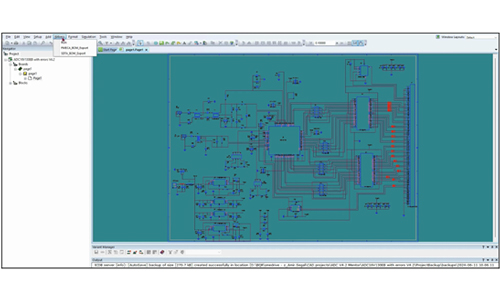Unlocking Enhanced Reliability Through Innovative Engineering Tools
Introduction
In today’s competitive electronics market, product reliability is critical for customer satisfaction and business success. One of the essential metrics for measuring reliability is Mean Time Between Failures (MTBF). MTBF prediction quantifies the average time between failures in electronic systems under defined operational conditions. Accurate predictions allow engineers to design products that not only meet performance standards but also minimize the risk of failures.
Given the complexity of modern electronic systems, understanding and improving the accuracy of MTBF predictions, streamlining the design workflow, and speeding up time to market are crucial for engineers and designers. This article explores the significance of accurate MTBF prediction in PCB (Printed Circuit Board) design and how integrating advanced software solutions can enhance the accuracy of these predictions. By leveraging tools such as fiXtress® and Synthelyzer™, organizations can significantly improve product reliability, reduce failure rates, and enhance customer satisfaction.
Problem Statement
Despite its importance, accurate MTBF prediction is challenging. Traditional design methods often struggle with data integrity and synchronization, leading to fragmented data and incomplete analyses. Engineers frequently face difficulties in making informed decisions that impact product reliability, which can ultimately lead to increased costs and diminished customer trust.
Understanding MTBF Prediction
Definition and Relevance
Mean Time Between Failures (MTBF) measures the expected operational time between inherent failures of a system. A higher MTBF indicates greater reliability, which is essential for meeting customer expectations and regulatory compliance.
Calculation Methodology
MTBF is calculated using the following formula:
MTBF = Total Operational Time / Number of Failures
Accurate calculations depend on high-quality data and robust analytical methods.
Challenges in MTBF Prediction
Several challenges complicate MTBF prediction:
- Fragmented Data: Engineers often use disparate tools that do not integrate well, resulting in incomplete and unreliable analyses.
- Limited Access to Data: Reliable information on component performance and failure modes can be scarce, hindering accurate predictions.
- Parts Stress vs. Parts Count: Operational component stresses are important for accurate MTBF prediction using the “Parts Stress” method, however these stresses are often not documented, thus forcing the engineer to conduct a low quality MTBF prediction based on the “Parts Count” method i.e. assuming 50% stress.
The Role of Advanced Software Solutions
Enhancing Single-Board Analysis with Synthelyzer™
BQR’s Synthelyzer™ streamlines MTBF predictions at the single-board level through:
- Detailed Derating Analysis: Synthelyzer™ ECAD Plug-In lets you conduct in-depth electrical stress derating analysis, during design, directly on the schematic, enabling you to evaluate the operating conditions for each component and identify potential overstress situations. After the derating analysis is complete, the defined operational stresses can be used for accurate parts stress MTBF prediction.
- Preliminary MTBF Predictions: Synthelyzer™ ECAD Plug-In offers quick initial MTBF predictions, allowing for informed design adjustments before production.
- Automated BOM Generation: The ability to automatically generate a Bill of Materials (BOM), including operational stress data, lays a strong foundation for further analysis.
Comprehensive System-Level Insights with fiXtress®
fiXtress® enhances MTBF predictions for complex designs:
- Aggregated MTBF Predictions: By consolidating data from multiple boards, fiXtress® provides a holistic view of MTBF across interconnected electronic systems, essential for understanding overall reliability.
- Advanced Prediction Methods: The software supports all leading prediction methods, enabling more nuanced analyses that fits your industry.
Synergistic Integration
The integration of Synthelyzer™ and fiXtress® creates a comprehensive framework for enhancing MTBF predictions:
- Seamless Workflow: These tools facilitate a continuous workflow from single-board analysis to system-level assessments, ensuring thorough data capture.
- Data-Driven Insights: By leveraging collected data, engineers can make informed decisions that positively impact MTBF and overall product reliability.
- Shift Left Methodology: Early detection of potential failure points supports a shift-left approach, improving MTBF outcomes and product quality during the design phase.
Case Study: Enhancing MTBF Predictions in a Multi-Board System
Background
A prominent electronics manufacturer specializing in consumer electronics faced challenges ensuring the reliability of their multi-board systems. With increasing customer demands for longer product lifespans and reduced warranty claims, the need for a robust approach to reliability analysis and MTBF prediction became apparent.
Challenges
- Ineffective Tools: Existing reliability analysis tools lacked integration, resulting in fragmented data and an inability to assess overall system reliability effectively.
- High Failure Rates: The company experienced a higher-than-expected rate of field failures, adversely affecting customer satisfaction and increasing costs.
Solution Implementation
The manufacturer adopted fiXtress® for system-level analysis and Synthelyzer™ for detailed single-board assessments. The integration process involved:
- Data Integration: Both tools were configured to pull data from existing design databases. Synthelyzer™ generated a comprehensive BOM, including operational stresses.
- Single-Board Analysis: Engineers utilized Synthelyzer™ for detailed derating analysis, identifying overstressed components and implementing design modifications before production.
- System-Level Analysis: The refined data was analyzed using fiXtress®, which evaluated the entire multi-board assembly and provided system-level MTBF predictions.
Results
The implementation of fiXtress® and Synthelyzer™ led to significant improvements:
- MTBF Improvement: The predicted MTBF for the redesigned systems increased by 40%, raising it from 35000 hours to 50000 hours.
- Reduced Failures: A 30% reduction in field failures was achieved within six months, driven by proactive identification and mitigation of overstressed components.
- Cost Savings: The reduction in warranty claims resulted in annual savings of over $1 million.
- Design Efficiency: The integration of these tools streamlined the design process, reducing time to market by approximately 15%.
Lessons Learned
- Integrated Tools Are Essential: The case demonstrated the necessity of integrated solutions like fiXtress® and Synthelyzer™ for comprehensive reliability insights.
- Proactive Reliability Assessment: Early analyses significantly improved MTBF predictions and prevented costly failures.
Conclusion
This white paper highlights the transformative impact of advanced software solutions like fiXtress® and Synthelyzer™ on MTBF prediction and product reliability. By enabling detailed analysis at both the single-board and system levels, these tools empower engineers to make informed design decisions that lead to superior product performance and increased customer satisfaction.
For further insights into improving reliability in your designs, visit the Synthelyzer™ ECAD Plugin and fiXtress® webpages.
Related Categories

